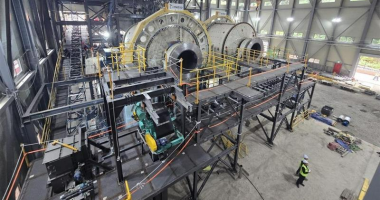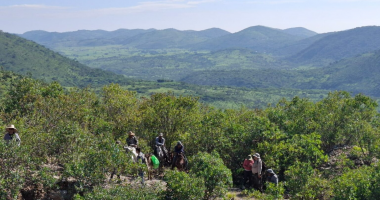- Healthia (HLA) has positioned itself as an active participant in the global health care sector’s current period of frenzied consolidation
- The allied health care provider has executed a string of acquisitions since the COVID-19 pandemic began last year
- Managing Director and CEO Wes Coote said part of Healthia’s growth strategy is deploying $20 million towards earnings-accretive acquisitions each year
- Its biggest deal was the purchase of 64 Back In Motion physiotherapy clinics for $88.4 million in September this year
- Healthia has spent $153 million on acquiring a total of 137 clinics since May 2020, and has grown its portfolio by more than 170 per cent since it listed in September 2018
For the last two decades, the world’s major health systems have been on a campaign of mergers and acquisitions, snapping up smaller rivals in a bid to grow their own networks. That trend, however, saw an uptick in late 2020 and early 2021 in particular, marking the busiest period on record — not in spite of the pandemic, but because of it.
Reduced patient visits, delays to prescription fulfillments, and the suspension of non-essential and non-emergent care has left many small, independent health care providers financially strapped. As a result, roughly 70 per cent of physicians in independent US practices consider themselves amenable to acquisition, according to Bain & Company’s 2020 US Front Line of Healthcare Survey.
“Fifty per cent of hospital administrators said their organisations were highly likely to make one or more acquisitions over the next two years to pursue greater scale,” Bain & Company said.
“Administrators considering M&A were most interested in alternative care sites, including ambulatory surgery centres, urgent care clinics and pharmacy in-store clinics.”
In the past, mergers and acquisitions have proven to be a saving grace in times of crisis. Companies that made acquisitions over the 10-year period from 2007 to 2017, according to Bain & Company, enjoyed on average 27 per cent higher shareholder returns than those who didn’t.
Healthia (HLA) is not just aware of this trend but is actively engaged in it, having executed a string of acquisitions over the last 18 months.
The company is one of Australia’s leading diversified health care businesses, with three primary divisions: Bodies and Minds, Feet and Ankles, and Eyes and Ears. Where Healthia differs from other providers, however, is in its commitment to investing in the clinicians it acquires, supporting their continued development through clinical autonomy, ongoing education and training, and the provision of multi-faceted career journeys.
According to Managing Director and CEO Wes Coote, part of Healthia’s growth strategy is deploying $20 million towards earnings-accretive acquisitions each year.
“Given the fragmented nature of Healthia’s primary disciplines — physiotherapy, podiatry and optometry — we continue to see good opportunities to acquire clinics that we are confident we can grow,” Mr Coote said.
“By providing support and marketing services that can streamline back-office operations, our clinicians are able to focus their efforts towards additional allied health services and better patient outcomes.”
Healthia began its most recent spree of acquisitions in May 2020, with the purchase of The Foot and Ankle Clinic — comprising 12 podiatry clinics in Melbourne and regional Victoria — for $5 million.
In October the same year, the company followed up with the buyout of three physiotherapy clinics in Queensland for another $5 million, along with Natural Fit Footwear — a specialty footwear retailer with five stores in New South Wales and one in Victoria — for just over $2 million.
In November, Healthia closed the year with its biggest deal: the $43 million acquisition of The Optical Company — a leading optometry business with a network of 41 stores — which generated $35.8 million in underlying revenue in FY20.
2021 continued in much the same way, with the $1.4 million purchase of The Physio Clinic — consisting of three physiotherapy clinics in South Australia — in early February, and the $1.5 million acquisition of Victoria-based Sandringham Sports Physio in March.
May saw the purchase of Bernie Lanigan Optometrist — an optical store in Townsville, Queensland — for $620,000, while the $1.4 million buyout of The Eyecare Place in Abbotsford, Victoria, was completed at the start of July.
In August, Healthia purchased Hobart-based clinic AllCare Physiotherapy, Queensland-based clinic Anytime Physio, and John Holme Optometrist — comprising two optical stores located in North Queensland — for a total of $2.46 million.
Most notable, however, is Healthia’s acquisition of Back In Motion (BIM) — a chain of 64 physiotherapy clinics — in September for $88.4 million. The deal positions the company as Australia’s number one provider of physiotherapy services and, as of mid-November, the acquisition of 39 of those clinics had been settled.
In FY21, BIM generated underlying revenue of $62.9 million and underlying EBITDA of $12.3 million, and Mr Coote said he had been “thoroughly impressed” in his dealings with clinicians.
“In line with our stated growth strategy, the acquisition of BIM marks an exciting chapter for Healthia, adding significant scale to our Bodies & Minds division and expanding our geographical reach into other states and the New Zealand market,” Mr Coote said in September.
“Together, we will be the leading provider of physiotherapy services in the country, giving our patients more choice and better service while continuing to focus on exceptional patient outcomes.”
All told, Healthia has spent $153 million on acquiring a total of 137 clinics since May 2020, and has grown its portfolio by more than 170 per cent since it listed in September 2018.
Still, the company holds less than 3.5 per cent of the $3.5 billion Bodies and Minds market, and less than 2.5 per cent of the total addressable industry across all its divisions, meaning there is significant room to grow both Healthia’s strategy and its business.
The companies to recover quickest from the pandemic will be the ones that acted quickest, and Healthia was one of the first out the gate. The company has a clear strategy and a competent, ambitious management team. It has an impressive string of acquisitions already under its belt, and it’s also heavily diversified, which — in a world of pending disasters — is no bad thing at all.
What’s more, this trend of consolidation has so far shown no sign of letting up. How long it will last or what things will look like a year from now, no one knows. What is certain, however, is that investors are in for an interesting — and potentially lucrative — ride.






